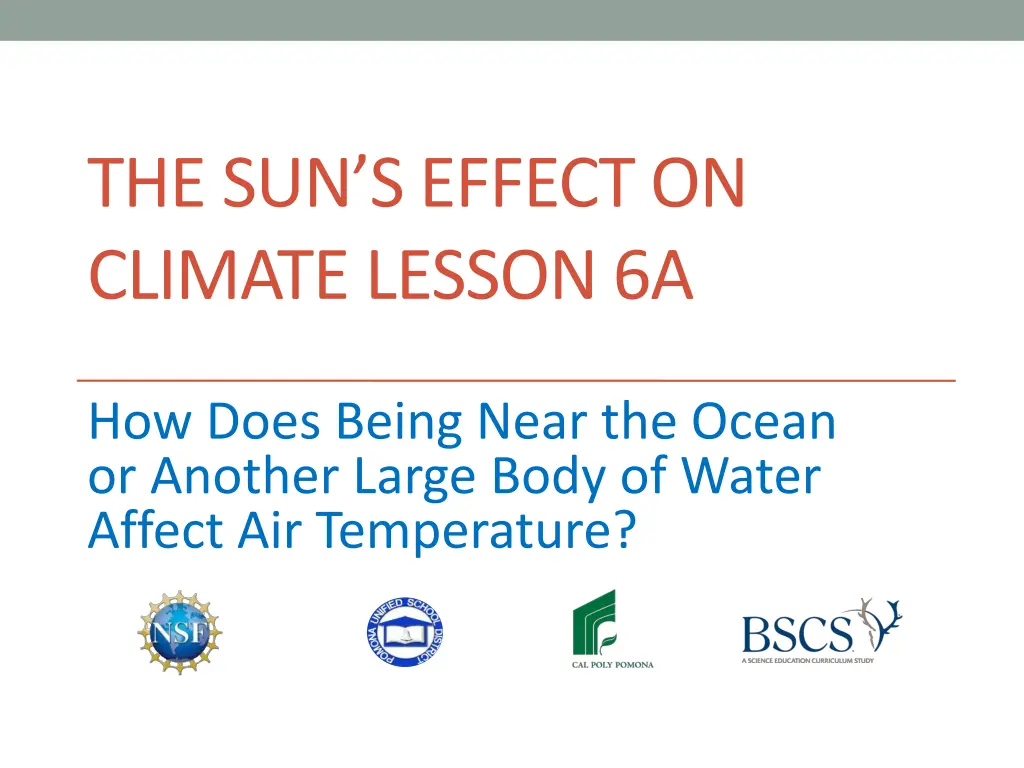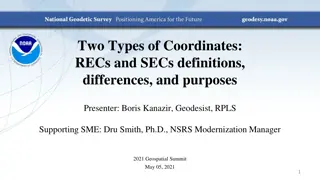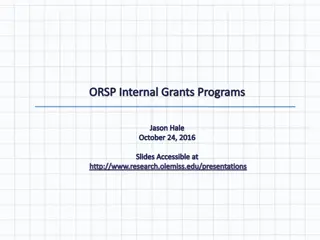
Understanding the Sun's Influence on Climate Patterns and Air Temperature
Learn how proximity to large bodies of water, such as oceans, impacts air temperature and climate, and explore factors affecting temperature variations on Earth. Discover the role of uneven heating in investigating temperature differences. Engage in hands-on activities to track and analyze soil and water temperatures.
Download Presentation

Please find below an Image/Link to download the presentation.
The content on the website is provided AS IS for your information and personal use only. It may not be sold, licensed, or shared on other websites without obtaining consent from the author. If you encounter any issues during the download, it is possible that the publisher has removed the file from their server.
You are allowed to download the files provided on this website for personal or commercial use, subject to the condition that they are used lawfully. All files are the property of their respective owners.
The content on the website is provided AS IS for your information and personal use only. It may not be sold, licensed, or shared on other websites without obtaining consent from the author.
E N D
Presentation Transcript
THE SUNS EFFECT ON CLIMATE LESSON 6A How Does Being Near the Ocean or Another Large Body of Water Affect Air Temperature?
Last Time What ideas did you come up with in the last lesson that explain why some places on Earth are hotter than others at different times of the year?
Factors That Explain Different Temperature Patterns on Earth The angle of sunlight hitting Earth s curved surface at different latitudes The consistent tilt of Earth on its axis Earth s orbit around the Sun Elevation Being close to a large body of water like an ocean
Lesson Focus Question How does being near the ocean or another large body of water affect air temperature?
Your Ideas about Air Temperature Why do you think being close to an ocean or some other large body of water might affect air temperature?
Uneven Heating Let s take turns reading the first paragraph of the handout (Uneven Heating) and the overview for part 1. What does the overview for part 1 say we re going to investigate? Now look at the supply list. What materials will we be using for this investigation? Answer the questions on page 1 of the handout (part 1): 1. How will we make sure the water and soil samples are heating and cooling evenly? 2. How will we track our measurements and make sure they re accurate?
Role Student Roles to Fill Timer 1 Timer 2 Baseline Temperature (Soil) Baseline Temperature (Water) Temperature at 3 Min (Soil) Temperature at 3 Min (Water) Temperature at 6 Min (Soil) Temperature at 6 Min (Water) Temperature at 9 Min (Soil) Temperature at 9 Min (Water) Temperature at 12 Min (Soil) Temperature at 12 Min (Water) Temperature at 15 Min (Soil) Temperature at 15 Min (Water) Temperature at 18 Min (Soil) Temperature at 18 Min (Water) Timers to keep track of when to read the soil and water temperatures. Temperature readers to read and report the soil and water temperatures to the class.
What Do Each of These Items Represent in the Real World? Item What It Represents Heat lamp Heat lamp (turned on) Heat lamp (turned off) Cup of water Cup of soil
Investigating Temperatures In what ways do you think this investigation could help us answer our focus question, How does being near the ocean or another large body of water affect air temperature?
Interpreting Data: Question 1 What patterns do you observe when you compare the soil and water temperatures during the heating phase? What about during the cooling phase? Record your observations for question 1 on your handout and be prepared to share them with the class.
Interpreting Data: Question 2 Water and land heat and cool the air above them. In the summer, they heat up, and so does the air. In the winter, the land and water cool down, and so does the air. But water and land don t heat and cool at the same rate. How do the data you collected support this statement?
Looking for Connections Compare today s temperature data for the soil and water with your line-graph data for the three US cities from lesson 5. Think about this question: How might the results of today s investigation help us explain the temperature data for the three cities?
Which City Fits the Pattern? Share with a partner how you think today s investigation might help us explain the temperature data from lesson 5. Then complete this sentence in your notebook for each of the three cities: The temperature patterns of [San Francisco/Colorado Springs/St. Louis] are [consistent/not consistent] with being near a large body of water because _________________.
Lets Summarize! Key science ideas: Water absorbs and reflects (releases) heat energy at slower rates than land. This means that air temperatures near oceans or other large bodies of water heat and cool more slowly over time. Cities near large bodies of water experience fewer temperature variations throughout the year than cities that aren t near large bodies of water.
Next Time How do factors like elevation or being near the ocean affect air temperature? We ll continue exploring this question in our next lesson, so stay tuned!






















